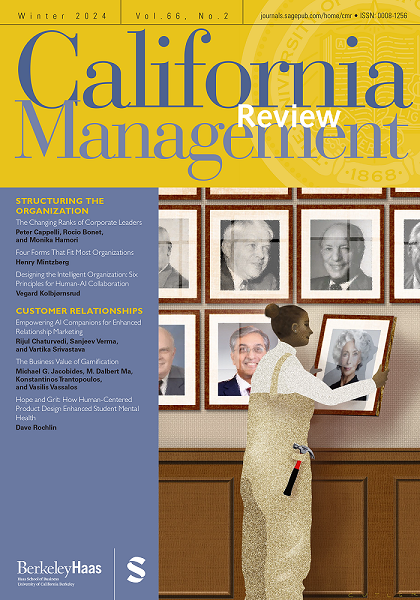开放式创新的“多单元后端问题”:企业如何克服业务单元竞争
IF 6.3
2区 管理学
Q1 BUSINESS
引用次数: 14
摘要
本文以拥有两个业务单元的法国大型银行Banque Popular Caisse d’Epargne(BPCE)集团为例,研究了开放创新的“多单元后端问题”。当认为自己是竞争对手的内部业务部门被要求为开放创新计划的成功而合作时,就会出现多部门后端问题。由于内部业务部门之间的竞争,BPCE多次未能利用外部初创公司加快其数字化转型。这篇文章提出了一些指导方针,有竞争对手业务部门的公司在与初创公司合作以加快其数字化转型计划时,可以使用这些指导方针来调整其前端和后端。本文章由计算机程序翻译,如有差异,请以英文原文为准。
Open Innovation’s “Multiunit Back-End Problem”: How Corporations Can Overcome Business Unit Rivalry
This article examines the “multiunit back-end problem” of open innovation based on a case study of the Banque Populaire Caisse d’Epargne (BPCE) Group, a large French bank with two business units. The multiunit back-end problem occurs when internal business units who consider themselves rivals are asked to collaborate for the success of an open innovation initiative. BPCE failed several times to use external startups to accelerate its digital transformation due to rivalry between its internal business units. This article presents guidelines that firms with rival business units can use to align their front-end and back-end when working with startups to accelerate their digital transformation program.
求助全文
通过发布文献求助,成功后即可免费获取论文全文。
去求助
来源期刊

California Management Review
Multiple-
CiteScore
18.40
自引率
3.00%
发文量
23
期刊介绍:
California Management Review (CMR) serves as a vital link between academia and management practice, offering leading-edge research with practical applications. Edited at UC Berkeley’s Haas School of Business, CMR covers a wide range of management topics, including innovation, strategy, sustainable practices, and human resources. CMR ranks among the top management journals globally, distributing articles through outlets like Harvard Business School Publishing and SAGE Publishing. Focused on bridging academia and practice, CMR ensures that all articles are based on rigorous academic research while providing actionable insights for managers. In addition to regular issues, CMR publishes special issues and sections on relevant topics, often guest-edited by leading faculty. Recent special issues have covered dynamic capabilities, city innovation, big data, and intellectual property management.
 求助内容:
求助内容: 应助结果提醒方式:
应助结果提醒方式:


